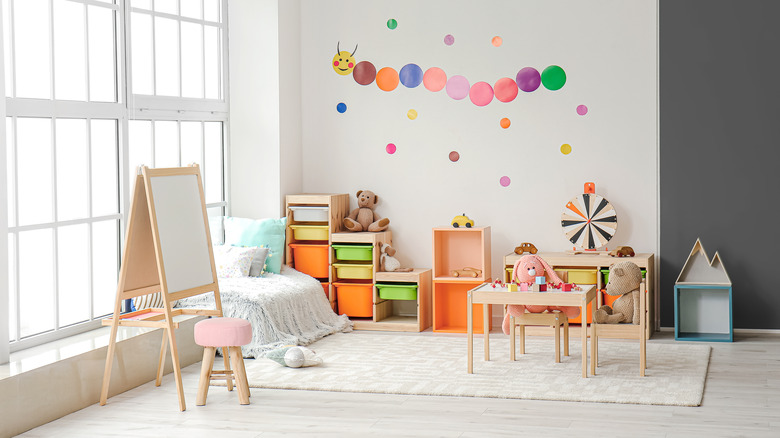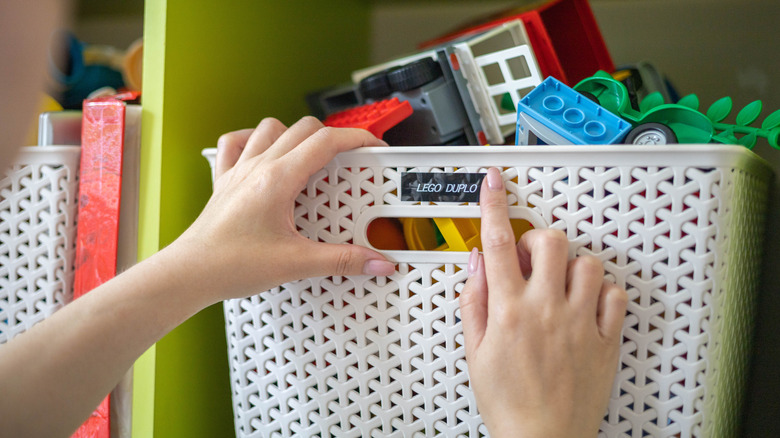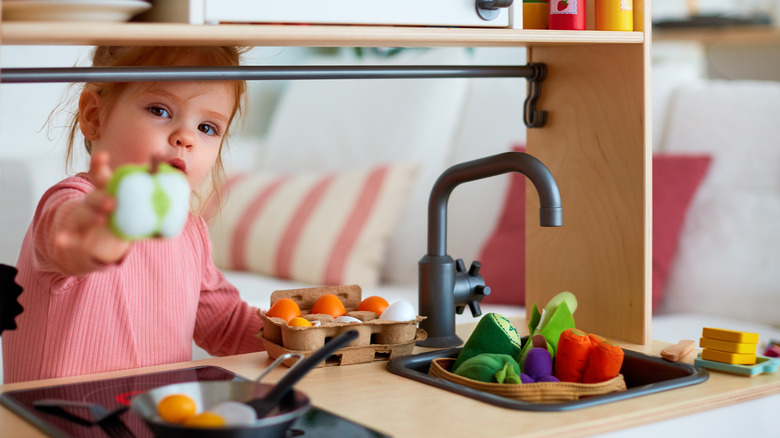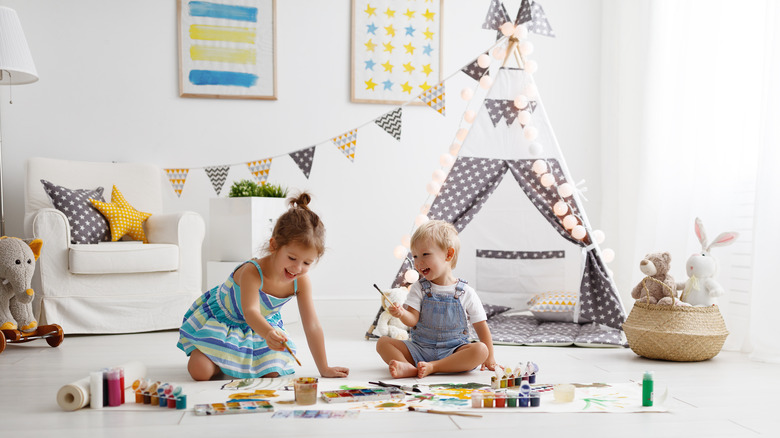A Design Expert Explains How To Create A Kids' Playroom In A Small Space
It's no secret that kids' toys can easily take over your entire home. That's why many parents love the idea of having a designated place where all those toys can live (or, at the very least, return at the end of the day), also known as a playroom.
Playrooms can be a positive addition to your space for several reasons. From the aesthetic perspective, you may simply love the fact that all those toys can be corralled in one space and that you know where everything is. However, it may also be a perk for your kids. As The Source Family outlines, having a separate playroom can help your kids associate their bedrooms with sleeping rather than playing, potentially fostering good sleep habits. Additionally, they can cultivate a ton of skills in their playroom, from organization and responsibility to creativity and imagination.
The reality is, though, that you may not have a home with enough space for a dedicated playroom. Not to worry — a playroom doesn't strictly have to be a separate room. It can be a segment of a larger family room, a little zone in a hallway, or whatever else fits your home's particular layout and your family's needs.
In an exclusive interview with House Digest, Ashlee Kinsella, designer and founder of Tiny Human Print Co., gave us three key tips to keep in mind when designing the perfect playroom for your kids in a smaller space.
Shore up storage
It likely comes as no surprise that the number one element in a well-planned playroom, regardless of the size, is toy storage. After all, you need a place for all those toys to go. However, don't assume that you need an entire wall of shelving or a massive closet to contain everything. The requirements are more modest, according to Ashlee Kinsella.
"Find one stand alone shelving unit that can serve as toy storage," she recommends. "Ideally, you want a unit that can hold a few baskets to keep things contained and hidden when it's not play time, as organization is key to a small space."
When finding baskets for the playroom, you may want to first evaluate the types of toys your child or children have in order to determine how many baskets you need. "Have designated baskets for different types of toys, like a basket for all things with wheels, a basket for doll items, a basket for stuffed animals, etc.," Kinsella suggests.
Including proper storage will not only help keep the room from becoming utterly chaotic, it'll also help your child as they're developing particular skills. "Sorting like this helps little ones better observe how things are alike and different, and helps minimize the overwhelm of cleanup time by tasking them with cleaning up one item at a time," Kinsella explains.
Add a toy kitchen
Typically, the type of toys in your playroom will depend on each individual child and what they prefer to play with. Children with an artistic spirit may want easels, art supplies, Play-Doh, and other items they can make fun creations out of. Other children may favor the whimsical world of dress-up, while others yet may want every kind of vehicle and track they can get their hands on. Ultimately, though, there's one toy that Ashlee Kinsella suggests every playroom should have, especially those in smaller spaces — a toy kitchen.
"Adding a little play kitchen to a small space can bring endless fun, last as entertainment for a few years, and serve as toy storage in its various compartments. It's a big bang for your small space needs," advocates Kinsella.
Even if your child hasn't played with many food-centric items before, the endless possibilities and learning opportunities within a toy kitchen mean it's something you still may want to consider. "Kids will come up with a whole slew of imaginative ideas to play with; restaurant, chef, coffee time, tea time, mommy and daddy at home with baby dolls, etc.," outlines Kinsella. "It's the perfect time to challenge gender roles and teach children how to be kind to wait staff and be respectful in a restaurant."
Choose the right artwork
Given that you want the playroom to be a space where kids can really express their own creativity and imagination, you may assume that artwork isn't necessary. However, Ashlee Kinsella would disagree with that sentiment.
"Hanging artwork up on the walls can tie even the smallest spaces together," she emphasizes. "Tons of research has been done on how artwork and colors affects a person's mental health, and children are no different."
However, that doesn't mean you should select any pieces that appeal to you — the primary user of the space, your child or children, should still be the key consideration. Kinsella has a few rules of thumb when making artwork selections for a small space playroom. "Adding light and bright colors to small areas help give the space more depth and make it feel more open than it actually is," she suggests. "Keep the walls neutral and choose artwork that has a balance of whitespace and color."
And, though color is important, don't be tempted to select pieces that are so vibrant they may negatively affect your children. "Small children can be easily overstimulated, so keeping the balance of neutral with colors is key to creating a small space playroom that fosters learning and creativity," she explains.
If you're still stumped, why not narrow down the options and have your child make the final call? After all, it's their creative space — everything, including the artwork, should be something they love.



